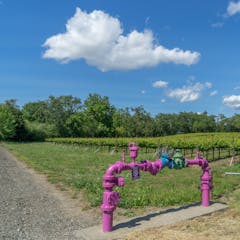
Artículos sobre Recycled water
Mostrando todos artículos

Recycled waste water is perfectly safe to drink, but many people aren’t keen to use it for anything other than watering plants.

To build drought resilence, Sydney must invest in rainfall-independent water supplies.

We detected 180 contaminants in treated and untreated water. None of those found in treated water breached human health guidelines, but we should not forget about potential impacts on the environment.

Australian politicians have a history of opting for high-cost, high-emissions desalination projects. The Queensland government is still wary of using the largely untapped resource of recycled water.

Researchers have long argued that greywater could bolster South Africa’s food security if it’s used to water domestic food gardens.

To continue to sustain or grow populations — and economies — more is going to have to be done with the same amount of water, or even less.

Once water is used in washing, cleaning or even sewerage it can be safely and reliably treated. The treated water is then safe to drink – identical to the original water.

Wastewater reuse suffers from a perception problem.

Cities relied entirely on conserving and recycling water to get through the last big drought. We now have desalination plants, but getting the most out of our water reserves still makes sense.

Perth is looking at recycling all its sewage in the city’s future water supply. But many Australians’ drinking water already contains indirectly recycled treated sewage.

Australian cities have turned to some very costly solutions when water is scarce. But as the world’s second-highest users of water per person, more efficient use and recycling are key.

There is no longer any good reason to waste any type of water. We have the technology to turn waste water into a vital resource.

In light of climate change and a growing population, water authorities around the world are looking to recycled water.

Despite its long idle, Melbourne’s desalination plant plays a vital role in providing water in a drying climate.

Australians eat a lot of water. Nearly 500 L is required to produce the food each of us eats every day.
